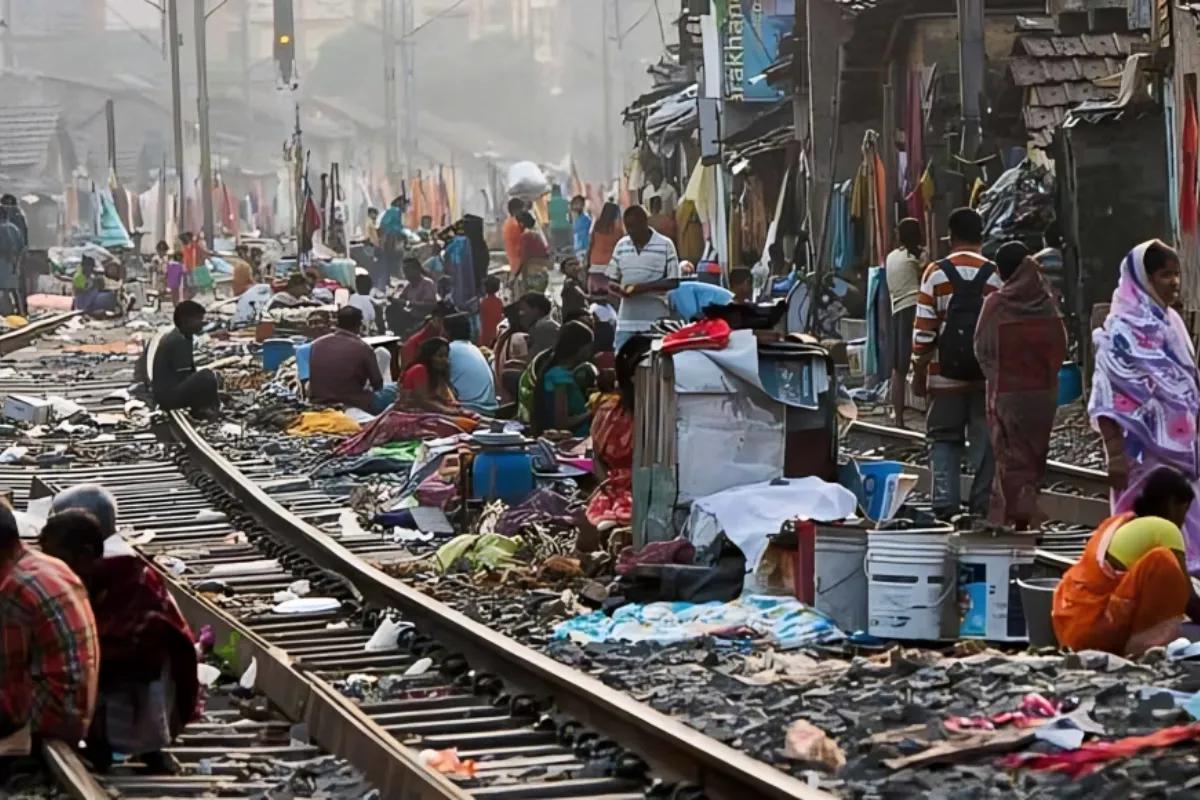According to a report by the American think tank Brookings, India has officially eradicated extreme poverty, evident through a rapid decline in the poverty ratio and substantial growth in domestic consumption. The report, authored by Surjit Bhalla and Karan Bhasin attributes this transformation to robust government policies that have led to inclusive development in the past decade. Let’s delve into how India has officially eliminated extreme poverty based on this insightful report.
Progress in Poverty Reduction
The Headcount Ratio (HCR) for the poverty line of $1.9 PPP USD has decreased from 12.2% in 2011-12 to 2% in 2022-23, translating to an annual decline of 0.93 percentage points. Rural poverty has reduced by 2.5%, while urban poverty has seen a decline of 1%. For the poverty line of $3.2 PPP USD, the HCR has decreased from 53.6% to 20.8%, marking a significant improvement.
According to Brookings, the government’s efforts particularly in providing nearly free food (wheat and rice) to approximately three-quarters of the population, have not been adequately acknowledged. Additionally, the focus on public health and education usage has contributed to this success. The report emphasizes that the reduction in the upper poverty line is noteworthy, as India achieved what took 30 years for other nations in just 11 years.
Overall Poverty Ratio
The Brookings report presents a chart illustrating India’s HCR for poverty lines of $1.9 and $3.2 PPP USD until 1977-78. The authors highlight policies like the National Mission for constructing toilets, promoting modern cooking fuel, and recent efforts to increase access to piped water, which have positively impacted the universal reach of these essential services.
The report underscores the significant progress in providing piped water to rural areas, which has increased from 16.8% in August 2019 to 74.7% presently. This accessibility can contribute to higher income generation for families by preventing diseases associated with the scarcity of safe water.
Impact of Modi Government’s Policies
Various initiatives by the Modi government have played a crucial role in poverty reduction. Some prominent schemes include:
- Pradhan Mantri Gramin Awaas Yojana: Aiming to provide 13 million housing units in rural areas and make housing available for all at affordable rates. The scheme also facilitates access to loans at concessional rates and increases employment opportunities through guaranteed wage employment every year.
- Mahatma Gandhi National Rural Employment Guarantee Act (MGNREGA): Ensures 100 days of guaranteed employment per rural household each year. One-third of proposed jobs will be reserved for women. The central government will establish a National Employment Guarantee Fund.
- Pradhan Mantri Jan Dhan Yojana: Intended to transfer direct benefits of subsidies, pensions, insurance, etc., and aimed to open 150 million bank accounts. This scheme particularly targets the financially excluded poor.
- Pradhan Mantri Kaushal Vikas Yojana: Focused on entry-level workers in the labor market, especially those who drop out after the 10th and 12th classes.
- Pradhan Mantri Ujjwala Yojana (PMUY): Aims to distribute 50 million LPG connections to women below the poverty line.
Impact of Modi Government’s Tenure
According to the NITI Aayog report, over the past nine years, a total of 24.82 crore people in India have successfully escaped multidimensional poverty, with the most significant reduction observed in Uttar Pradesh, Bihar, and Madhya Pradesh. The report further notes that India’s multidimensional poverty has decreased from 29.17% in 2013-14 to 11.28% in 2022-23, with approximately 24.82 crore people lifting themselves out of poverty.
The report acknowledges the government’s initiatives, such as the Poshan Abhiyan (Nutrition Campaign), Anemia Mukt Bharat (Anemia Free India), Ujjwala, and others, which have addressed various dimensions of deprivation. It predicts that India is on track to achieve half the Sustainable Development Goal of halving multidimensional poverty by 2030.
